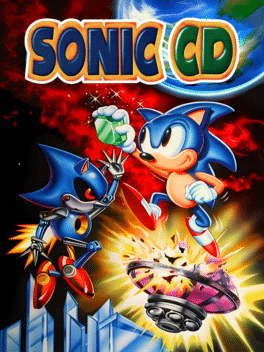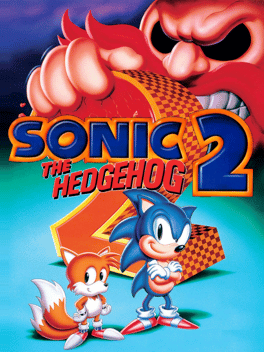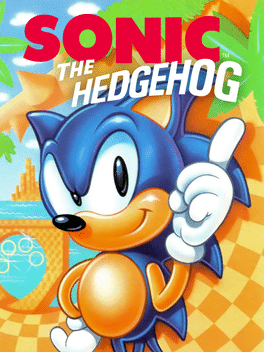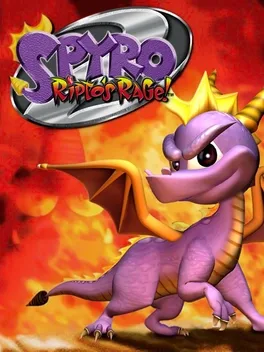(Originally published to Glitchwave on 2/12/2023)
Sonic Mania
Developer: Christian Whitehead, Headcannon, PagodaWest Games
Publisher: Sega
Genre(s): 2D Platformer
Platforms: PC, PS4, Xbox One, Switch
Release Date: August 15, 2017
To call Sonic Mania a long-awaited sequel to the classic Sonic titles is a bit of a misnomer. Instead of being a sequel in the traditional sense of the word, Sonic Mania is a remastered compilation of handpicked levels from the classic Sonic trilogy on the Genesis (plus Sonic CD, imprinting a mark the one Sega CD outlier has even deeper in the golden age of Sonic) with a fresh batch of original levels and composing them into a sequential narrative format that mirrors a concise Sonic title. Once the drooling mob of Sonic fans hears this, their panting anticipation may quickly shift to crestfallen disappointment. Sure, Sonic Mania is a loyal return to form, but to the extent where the game seems like a recycled mishmash of levels we’ve already played ad nauseam? What is Sega trying to pull here? Did they steal modded Sonic levels from the internet and hope their fans wouldn’t be the wiser of their acts of plagiarism? No, they didn’t. In fact, the Sonic origami that makes up Mania’s foundation is one of the most appealing aspects of the game. Christian Whitehead, the lead developer of Sonic Mania, is also notable for developing the mobile ports of the classic Sonic games, implementing the frills of gaming progress, such as save features and multiple characters for a modern audience. Whitehead’s initiative wasn’t only to expose a younger audience to the Sonic games that the older generations praise to the high heavens but to illustrate how simple it is to improve on these rusty relics just by adding the mechanisms these games were deprived of for a smoother experience. Once you research the main developer’s background and see his resume, you understand the mission of Sonic Mania. Perhaps instead of succeeding in the classic Sonic games, Mr. Whitehead is tasked to remedy the shortcomings of the entire era of classic Sonic as a condensed package, the ultimate refurbishing to convince the Sonic skeptics such as myself of his greatness. None of the golden era entries, despite the clear evolution with every subsequent game, ever fully won me over and made me renounce every Nintendo system I’ve ever owned. With the perk of decades worth of progress, maybe Sonic Mania will be the one to do the trick.
Rendering Sonic on the 2D axis once again, as seen in Sonic Generations, made for a satisfactory emulation of his bygone gameplay, but the graphics in 2D Sonic’s levels still shared the same polygonal textures as the Sonic modeled for the 3D environment. 2D Sonic’s graphics verged on the boundaries of the uncanny valley, so Sega’s attempt to recreate those 2D sensibilities never resonated with the classic Sonic fan. Everyone knows that classic Sonic was a pixelated mesh of blue and flesh-colored sprites, and Sonic Mania would be remiss if they adulterated the blue blur’s character design. Sonic looks precisely as he did long ago, and he’s adopted his brow-furrowing determined expression as opposed to the smarmy one from Sonic 3. When he spins dashes, Sonic still revs up and creates friction with his steady inertia, and when he reaches speeds that would make a velocity gun explode, his legs still oscillate wildly like he’s the Road Runner. The key difference in Sonia Mania is the heightened graphical sheen in the pixel art. Sonic, his friends, the levels, and the onscreen layouts, such as the ring and life counters, look so crisp that they make the player feel inclined to make that interjectional “aah” sound of refreshment. Another minute point of visual refinement is making Sonic more expressive. On top of his typical resting face and his shocked death animation we all know, Sonic’s range of gesticulation makes him seem as well animated as a cartoon character. Sonic looks up with more curiosity, he signals the need for speed by mimicking a gesture like he’s going to dart off in his idle animation, and the cutscene where Sonic shakes off a drop of chemical ooze seems like someone motion-captured their dog. The familiar pixelated aesthetic matched with this unfamiliar extent of motion reminds me of the various flash cartoons from Newgrounds, albeit with a much higher budget and without using the animation to make Sonic do and say dirty things.
It’s not only Sonic that looks more bright-eyed and bushy-tailed, but his friends as well. One of the tenants of renovation Whitehead consistently utilized in porting the classic Sonic games is retroactively adding Tails and Knuckles as playable characters, even if they didn’t exist when those games were published. Instead of hastily causing a severe rift in the Sonic timeline with blatant anachronisms, the impetus behind including Sonic’s oldest buddies in the fray for every port was to diversify the gameplay to achieve a different outcome. Like always, Tails can helicopter himself upwards with his twin back appendages, and Knuckles can glide and climb up walls along with other steep inclines. Tails can also regress back to his role as Sonic’s sycophantic sidekick that constantly drags behind him and mops up the bosses with invincible ease. Whether or not Sonic Mania features co-op and if they’ve granted the second player more of the spotlight with Tails has not been tested yet. On an individual basis, Sonic Mania designs each playable character’s campaign around their respective attributes instead of how the ports implemented them into levels designed for Sonic. Tails can still fly, but his rate of ascension has been reduced exponentially so as not to break the game for the more meager Sonic players to exploit. Knuckles' campaign exhibits slight differences in illustrating the story from his unique perspective, similar to how it was conveyed in Sonic & Knuckles. Alongside Sonic’s best buddies is a litany of forgotten figures from classic Sonic whose presence serves as tokens of fan service. During the boss encounters at the end of the second act of Mirage Saloon, Sonic faces off against a posse of characters that we haven’t seen since Sonic the Fighters in 1996. Sonic Mania’s DLC includes the ability to play as Mighty the Armadillo and Ray the Flying Squirrel, two characters from a ‘90s Sonic arcade game so obscure that only the most seasoned of Sonic nerds will recognize them. One might argue that including too many characters compromises the simplicity of classic Sonic, for adding too many friends to the guest list in Sonic’s later years became a bloated clusterfuck. I assert that if the characters predate the Dreamcast, their presence in a Sonic game that recalls his prime is welcome. This wouldn’t be the case if a fishing section with Big the Cat or Shadow showed up with a 16-bit scowl. As for Amy, who debuted in Sonic CD, her absence here as the green-bloused, bow-wearing classic form escapes me.
More important than anything else that has been overhauled in Sonic Mania are the returning levels. The batch that Whitehead & company have rebrewed for the game is an eclectic mix from the classic Sonic lineup, ranging from fan favorites like Green Hill and Chemical Plant to befuddling picks like Oil Ocean and Lava Reef. All of the classic games are represented here with a fair balance of equality, except for only Green Hill acting as the sole representative from Sonic’s debut. I’d argue that the levels from that game were in the direst need of reevaluating, but perhaps they’re too misshapen to even humor an operation. Hydrocity Zone from Sonic 3 returns to represent Labyrinth Zone in spirit, a revitalized version of the original attempt to make a functioning underwater level after Labyrinth butchered it from Sonic’s start. The polished graphics make each level look splendid, but the developers decided to offer more than the same levels with better visual fidelity. The classic Sonic levels possess the same visuals, platforming tropes, and enemies as they always have, but their layouts have been reconstructed from the ground floor. Cheap deaths from the unyielding days of austere game design are eradicated entirely. That is unless you factor in the strict hitboxes whenever Sonic gets squished between two surfaces, which is still something to be cautious of. While playing the returning levels and reflecting on their original iterations, all of them feel consistently smoother and fitting for a game revolving around the element of speed. Their collective presence in one game has coalesced them all into the most agreeable design philosophy seen across classic Sonic, no matter which game they originated from. Not only that, but the added level gimmicks like the buoyant chemicals in Chemical Plant and the plant platforms in Stardust Speedway fit into the preexisting levels splendidly, as if they were afterthoughts that Sega wished they would have reverted back and added since they were released.
New levels in Sonic Mania are the minority, with a mere four, for rekindling the older levels naturally took higher precedence in a game that harkens back to Sonic’s heyday. If Sonic Mania ever has a direct sequel, I want the developers to fill it to the brim with their own creations because the few here are excellent. Each of the four is beaming with style and deeply encompasses Sonic’s design philosophy. Studiopolis may have been crafted in the 21st century, but its flashy, paparazzi pizzazz screams Sega Genesis. Press Garden is my favorite of the newcomers for its gorgeous, zen forest background setting that looks like a pixelated Jidaigeki film. The oddly named Mirage Saloon is themed after the desert plains of the wild west and all of the culture associated with it. Steam trains, ale barrels, ragtime piano keys, and a pistol that shoots Sonic across the map after it rotates like a duel all make up the foreground of this arid canyon of cacti. Mirage Saloon’s first act even features Tails soaring through the sky on his red biplane with Sonic seated on the helm. Instead of having the player contend with a reimagining of one of the original game’s final levels, the developers inflict their own creation, Titanic Monarch, on the player as the game’s climactic climb. Normally, I’d lambaste this level for its extensive length, precision-based platforming, and obtuse, borderline surreal design in the second act. However, all of this being unique to the game’s final level is a perfect peak for the game’s difficulty curve. If I didn’t know better, I probably couldn’t distinguish the new levels from the old ones because the new ones exude the same amount of care and polish as the returnees, impressively so for their first outings.
Bosses have never been Sonic’s strong suit, and not even the most ardent Sonic fans will argue against this point. Robotnik attempts to destroy Sonic with a roulette of untested gimmicks that all literally blow up in his face. Sonic Mania’s bosses are no different on the Robotnik spectrum, except for that neat little nod to Dr. Robotnik’s Mean Bean Machine at the end of Chemical Plant. What interests me more than the bouts with the flying egg are the level-ending encounters with his robotic minions, for they are richer in variety. A cutscene in Green Hill Zone displays Sonic witnessing a meeting between Robotnik and his motley crew of colored robots, and each of these stocky androids serves as the mini-bosses in the first act of a level before Robotnik’s umpteenth attempt in the second act. One features Sonic running on a blue track at Mach speed, blowing back blue rockets at him while avoiding the red ones. Another is a samurai duel in the frosty woods of Press Garden and the magician robot veils himself as the aforementioned characters from Sonic’s past. The game also includes many creative boss fights that are not explicitly goons of Robotnik, such as the trash compactor and spring spider in Flying Battery and the leaping sandworm in Mirage Saloon. Some bosses are cheeky callbacks to classic Sonic bosses, such as the return of Metal Sonic and the Robotnik drill car and wrecking ball scaled down as toys for Chibi Sonic. My only complaint is that with the game’s more lenient ring collecting after being hit, the player can easily tank the damage the bosses dish out.
That being said, I’m not complaining that the game is too easy. I’ve suffered through so much unfairness in classic Sonic to do an ungrateful 180. A save feature is present and limitless continues, signifying that the Sega genie has granted all of my wishes for a less taxing, excruciating Sonic experience. The player doesn’t even need to partake in the special stages to earn extra lives and use Super Sonic as their inexhaustible juggernaut aid, or at least not in the traditional sense. The developers have evidently borrowed a bit from modern gaming tropes, as collecting all seven chaos emeralds will unlock the game’s final boss, the Egg Reverie. This revelatory completionist task incentivizes the player better than any classic Sonic game has, and even more surprisingly, the special stages are a joyous time. Finding the large golden rings in the levels will transport Sonic to a special stage that uses the UFO-catching template from Sonic CD and shifts it to a race. Sonic amplifies his speed with the blue orbs on the track and extends the time with rings. Not only are they fun, but they are the easiest to accomplish. I was prideful enough when the blue sphere stages netted me one Chaos Emerald in Sonic 3. This time, I am overjoyed to tell you that I collected all seven Chaos Emeralds in Sonic Mania. It’s an accomplishment I’ll print out and put next to my college degree.
By Jove, I think they’ve done it. I am in love with a classic Sonic game after the series has left me skeptical of its legacy. Am I now going to declare my newfound love for Sonic by sketching childish fanart of him and my own original hedgehog character, as well as sculpting plastic medallions of his visage? No, but now I can still appreciate and admire the depth and fluidity of classic Sonic’s level design more than I ever did. I now understand what the slightly older crowd, mostly my cousin, loved about classic Sonic, and those same people facilitated their love for it with this bundled tribute to the blue blur. With some love and polish, Sonic Mania has recreated what fans see behind their rose-tinted nostalgia glasses, validating their views and changing mine in the process.





